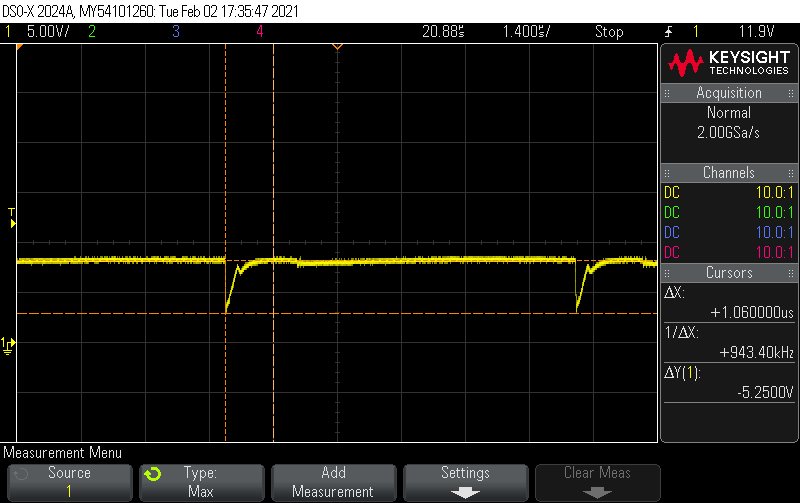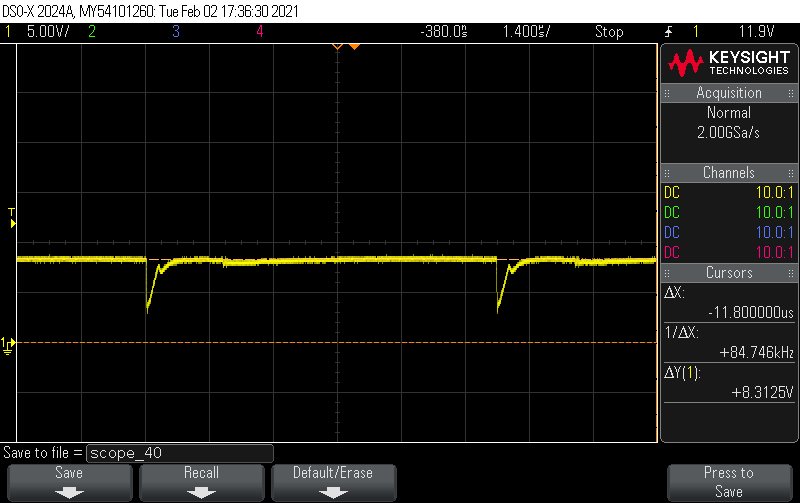Hey team,
Got an odd one for you here:
The datasheet calls for 2 decoupling caps, a .1, and one that is 10 times greater than the switching FET’s gate charge. The datasheet ALSO calls out for a series resistor on the Vcc pin. Does TI have any documentation on the effects of not including these components, I.E. will it significantly change the lifespan of this device? MY guess was that those components purely for EMI/EMC, and or self-heating but I wanted to reach out to see your thoughts on this.
What prompted this, was between two board revisions the series resistor was added, and the decoupling capacitor is now connected through a resistor, and when the device switches, the power drops 5v, which is below the turn off threshold voltage (attached) and we are trying to avoid another board spin before CE testing. As of now, the board works, and the radiated emissions seems to be OK. Do you believe these dips is enough to cause trouble to the Chip?



